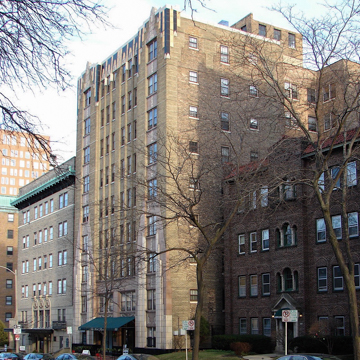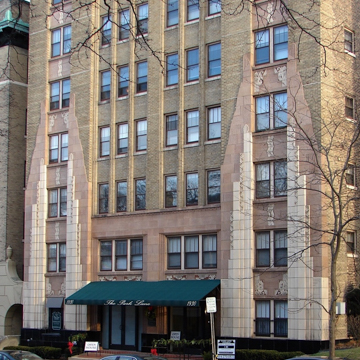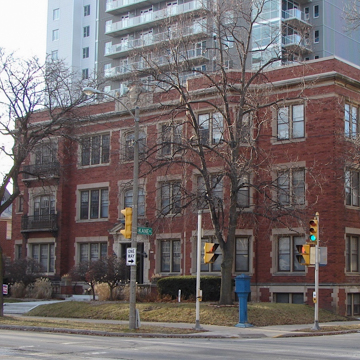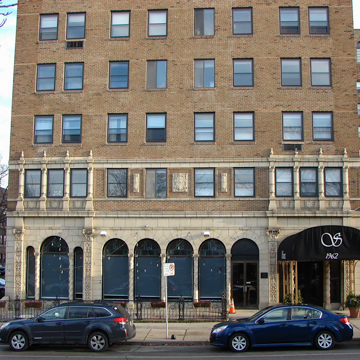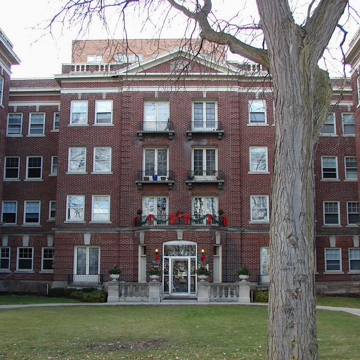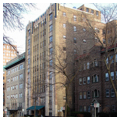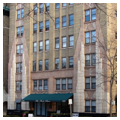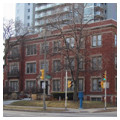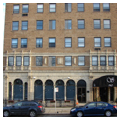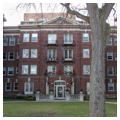One of the city’s best groups of high-style, early-twentieth-century apartment buildings is in this compact district of nineteen structures near the shore of Lake Michigan. The neighborhood is a showcase of Art Deco and period-revival buildings trimmed with high-quality materials such as hand-carved stone, terra-cotta, wrought iron, and ornamental brickwork.
Garden apartments featuring attractive, landscaped side or central courtyards were an early-twentieth-century phenomenon that still influences contemporary apartment design. An excellent example is the Elizabethan Revival Cudahy/Edgeview Apartments (1909) at 1857 N. Prospect Avenue, which has a side courtyard. At 1930 N. Prospect, the Park Lane Apartments (1930), a nine-story gem designed by Walter Stuckert, is beautifully lit by late afternoon sunlight when the gold-leaf terra-cotta ornament at the top story blazes with color. No other building in the city features a more exuberant use of decorative terra-cotta.
The Shorecrest Hotel (1962 N. Prospect) is a fine example of a residence hotel for short- and long-term residents who wanted to combine apartment living with the services of a fine hotel. The Mediterranean Revival nine-story brick building, designed by Martin Tullgren and constructed in two stages between 1924 and 1928, is lavishly embellished with buff-colored terra-cotta around the main entrance. A simplified Arts and Crafts style adds to the overall character of several apartments in this district, including the Stellwin Apartments (1911) at number 1982. The Lanterne Court (1917; 2009 N. Prospect), however, is Georgian Revival and has a central garden courtyard. Characterized by box-like massing, tapestry brick walls, and modest yet attractive architectural detailing, the Lafa yette Apartments (1911; 1913 E. Lafayette Place) ranks as one of the most interesting of the Craftsman-style apartments because of a remarkable hood over the main entrance, which is embellished with carved limestone brackets. Nearby, the Georgian Revival Ambassador (c. 1927; 1943 N. Summit Avenue) has a side garden courtyard.
Two buildings that characterize a conservative yet sophisticated interpretation of Art Deco are the Hathaway Tower (1930; 1830 E. Kane Place) and the Viking Apartments by Herbert Tullgren (1931) at 1705–1717 E. Kane. Both feature two-tone cream-colored glazed brick walls with black terra-cotta trim. Other examples of the Craftsman style include the Madra Villa Apartments (c. 1915) and the Wallard Manor Condominium (1911) at 1806 and 1704–1714 E. Kane Place, respectively.


